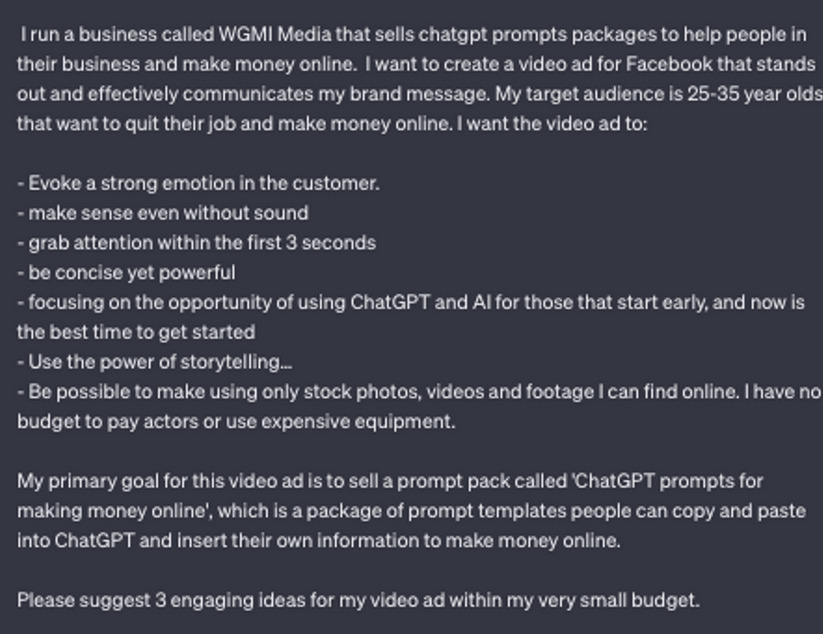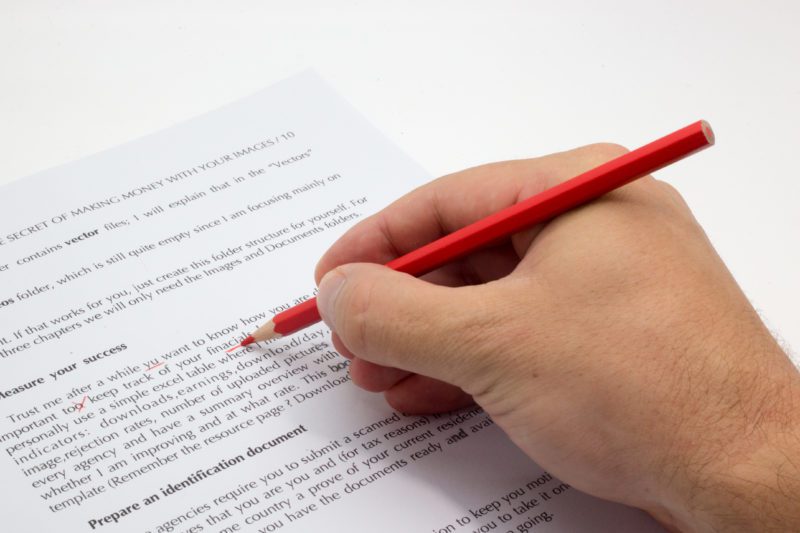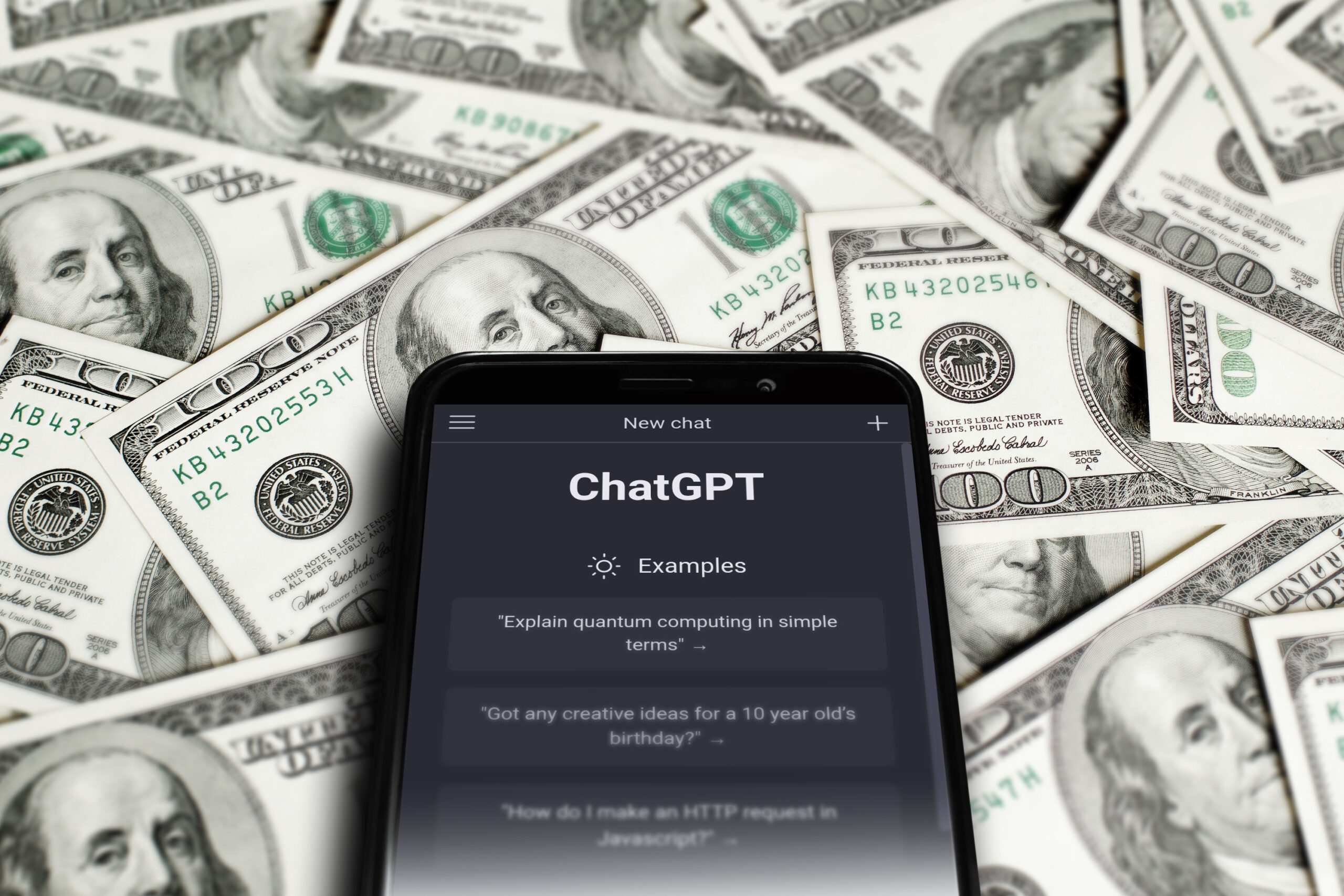
Published: Dec 3, 2024
Mastering the Art of AI-Powered Article Editing: ChatGPT's Secret Sauce
Mastering the Art of AI-Powered Article Editing: ChatGPT’s Secret Sauce
I’ve got a confession: I used to spend hours agonizing over every word in my articles. But then I discovered ChatGPT, and let’s just say, it’s been quite the ride! This AI sidekick has turned my editing process from a slog to a sprint. Ready to dive in and see how it can spice up your writing game too?
TLDR:How can ChatGPT improve my article editing process?
1️⃣ What are the key benefits of using ChatGPT for article editing?
ChatGPT streamlines the editing process by offering quick suggestions for clarity, coherence, and style improvements. It can help catch grammatical errors, enhance vocabulary, and even provide alternative phrasing options, saving time and improving overall quality.
2️⃣ How do I get started with ChatGPT for article editing?
To begin, simply paste your article into ChatGPT and ask for specific editing tasks, such as “Check for grammar errors” or “Improve sentence structure.” You can also request more comprehensive edits by asking ChatGPT to review the entire piece for clarity and coherence.
3️⃣ What are some best practices when using ChatGPT for editing?
Always review ChatGPT’s suggestions critically, as it may not always capture your unique voice or style. Use it as a tool to complement your skills, not replace them. Break down your editing process into specific tasks, and don’t forget to double-check facts and maintain your article’s original intent.
Table of Contents
- Getting Started with ChatGPT for Article Editing
- Key Editing Tasks ChatGPT Excels At
- Advanced ChatGPT Editing Techniques
- Potential Pitfalls and How to Avoid Them
- Integrating ChatGPT into Your Editing Workflow
- Real-World Success Stories
Getting Started with ChatGPT for Article Editing
Ready to supercharge your editing process? Let’s dive into the nitty-gritty of using ChatGPT to polish your articles. Trust me, once you get the hang of it, you’ll wonder how you ever managed without it!
Accessing ChatGPT
First things first, you need to get your hands on ChatGPT. Head over to OpenAI’s ChatGPT platform and sign up for an account. It’s free to use, but if you want the latest features and faster response times, you might want to consider the Plus subscription.
Preparing Your Article
Before you start, take a moment to prep your article:
- Copy and Paste Simply highlight your text, copy it, and paste it into the ChatGPT chat window.
- Chunk It Up: If your article is long, break it into smaller sections. ChatGPT has a character limit, so this helps avoid any cutoffs.
- Keep Formatting Simple: Strip out any complex formatting. Plain text works best.
Setting the Stage
Now, let’s tell ChatGPT what we want it to do:
You are now my personal editor. I'm going to share an article with you, and I'd like you to help me improve it. Please focus on grammar, clarity, and style. Here's the article:
[Paste your article here]Specific Editing Requests
After pasting your article, you can ask ChatGPT for specific edits. Here are some examples:
- Grammar Check: “Please check for any grammatical errors in the article.”
- Clarity Boost: “Can you identify any sentences that are unclear or confusing?”
- Style Enhancement: “Suggest ways to make the writing style more engaging and less formal.”
Reviewing Suggestions
ChatGPT will provide its edits and suggestions. Remember, it’s your trusty assistant, not your boss. Review each suggestion carefully and decide if it fits your voice and intent.
Iterative Process
Editing with ChatGPT is often an back-and-forth process. Don’t be afraid to ask for more details or clarification on its suggestions. For example:
Thanks for those edits. Can you explain why you suggested changing [specific edit]? I'm not sure if it fits the tone I'm going for.Fine-Tuning
As you get more comfortable, you can ask for more advanced edits:
- Transition Improvements “Can you suggest better transitions between paragraphs 3 and 4?”
- Vocabulary Enhancements: “Are there any words that could be replaced with more impactful synonyms?”
- Sentence Structure Variety
 “How can I vary my sentence structure to make the writing more dynamic?”
“How can I vary my sentence structure to make the writing more dynamic?”
Saving Your Work
Don’t forget to save your edited version! Copy the final text from ChatGPT and paste it into your preferred word processor or writing tool.
Practice Makes Perfect
Like any tool, getting the most out of ChatGPT takes practice. Start with shorter pieces and gradually work your way up to longer, more complex articles.
Remember, ChatGPT is here to enhance your writing, not replace your unique voice. Use it as a springboard for ideas and a second set of eyes, but always trust your gut when it comes to your final draft.
Now that you’re all set up, why not give it a whirl? Grab that draft you’ve been procrastinating on and let ChatGPT help you turn it into a polished masterpiece. Happy editing!
Key Editing Tasks ChatGPT Excels At
Ready to take your editing game to the next level? Let’s dive into the tasks where ChatGPT really shines. Trust me, once you see what this AI can do, you’ll wonder how you ever managed without it!
Grammar and Spelling Checks
ChatGPT is like having a super-smart proofreader at your fingertips. It catches those pesky typos and grammar slip-ups that even the best of us miss. Here’s how to make the most of it:
- Tricky Homonyms: Ask ChatGPT to spot commonly confused words like “their/there/they’re” or “affect/effect”.
- Punctuation Perfection: Have it double-check your comma usage, especially in complex sentences.
- Verb Tense Consistency: ChatGPT can ensure you’re not jumping between past and present tense unexpectedly.
Pro Tip: Customized Grammar Checks
Try this prompt: “Please review my article for grammar issues, paying special attention to [your specific concern, e.g., comma splices or subject-verb agreement].”
Enhancing Clarity and Coherence
Sometimes, what’s clear in our heads doesn’t translate well on paper. ChatGPT can help bridge that gap:
- Simplifying Complex Ideas: Ask it to rephrase difficult concepts in simpler terms.
- Logical Flow Check: Have ChatGPT analyze the progression of your ideas from paragraph to paragraph.
- Redundancy Removal: It can spot and suggest removing repetitive information.
Clarity Boost Challenge
Try this: “Can you identify any parts of my article that might be unclear to a general audience? Suggest ways to make these sections more accessible.”
Style and Tone Adjustments
Whether you’re aiming for professional, casual, or somewhere in between, ChatGPT can help you nail the right tone:
- Formality Tweaks: Ask it to adjust the formality level of your writing up or down.
- Voice Consistency: Ensure your article maintains a consistent voice throughout.
- Audience-Specific Language: Tailor your language to your target readers.
Tone Transformation Exercise
Give this a shot: “Please suggest ways to make this article sound more [conversational/professional/academic], while keeping the main points intact.”
Fact-Checking and Verification
While ChatGPT isn’t a real-time database, it can still be a valuable ally in the fact-checking process:
- Flagging Potential Inaccuracies: Ask it to highlight statements that seem questionable or need verification.
- Historical Context: It can provide background information to help you verify historical claims.
- Scientific Concepts: Use it to explain complex scientific ideas, helping you ensure you’ve understood and represented them correctly.
Fact-Check Challenge
Try this prompt: “Please review my article and flag any statements that seem like they might need additional verification or supporting evidence.”
Structural Improvements
ChatGPT can be your brainstorming buddy when it comes to organizing your thoughts:
- Paragraph Restructuring: Ask it to suggest better ways to organize your paragraphs for improved flow.
- Subheading Suggestions: It can propose subheadings to break up long sections of text.
- Transition Enhancements: Get ideas for smoother transitions between ideas or sections.
Structure Shake-Up
Give this a go: “Can you suggest a different structure for this article that might make the main points clearer or more impactful?”
Remember, while ChatGPT is incredibly helpful, it’s not infallible. Always review its suggestions critically and trust your judgment. Your unique voice and expertise are what make your writing special – ChatGPT is just here to help you polish it to perfection!
Advanced ChatGPT Editing Techniques
Ready to take your ChatGPT editing skills to the next level? Let’s dive into some advanced techniques that’ll make your articles shine!
Restructuring for Better Flow
Sometimes, your ideas are solid, but the structure needs work. Here’s how ChatGPT can help:
Paragraph Reordering: Ask ChatGPT to suggest a new order for your paragraphs that might improve the logical flow.
Prompt: "Can you analyze the current structure of my article and suggest a new order for the paragraphs that might improve the logical flow?"Topic Sentence Enhancement: Have ChatGPT review and improve your topic sentences to make each paragraph more impactful.
Prompt: "Please review the topic sentences of each paragraph and suggest improvements to make them more engaging and informative."Transition Magic: Get ChatGPT to craft smooth transitions between paragraphs or sections.
Prompt: "Can you suggest transition sentences between paragraphs 3 and 4 to improve the flow of ideas?"
Enhancing SEO-Friendliness
Make your article more discoverable with these SEO-boosting techniques:
Keyword Optimization: Ask ChatGPT to suggest relevant keywords and ways to naturally incorporate them.
Prompt: "Based on the content of my article, can you suggest 5-7 relevant keywords and phrases that could improve its SEO? Then, provide suggestions on how to naturally incorporate these keywords into the text."Meta Description Crafting: Get ChatGPT to write a compelling meta description for your article.
Prompt: "Can you create an engaging meta description for this article, under 160 characters, that includes the main keyword and encourages clicks?"Header Optimization: Have ChatGPT review and suggest improvements for your H2 and H3 headers.
Prompt: "Please review my H2 and H3 headers. Suggest improvements that make them more descriptive and SEO-friendly while maintaining their relevance to the content."
Tailoring Content for Different Audiences
One size doesn’t fit all when it comes to content. Here’s how to adapt:
Audience-Specific Vocabulary: Ask ChatGPT to adjust your language for different reader levels.
Prompt: "Can you review this article and suggest changes to make it more accessible for a [beginner/intermediate/expert] audience in [your topic]?"Cultural Sensitivity Check: Get ChatGPT to flag potentially culturally insensitive language or examples.
Prompt: "Please review this article for any language or examples that might be culturally insensitive or not translate well to a global audience. Suggest alternatives where appropriate."Storytelling Enhancement: Have ChatGPT suggest ways to incorporate more storytelling elements to engage your audience.
Prompt: "Can you suggest ways to incorporate more storytelling elements into this article to make it more engaging? Consider adding an anecdote, metaphor, or scenario that illustrates the main points."
Voice and Style Consistency
Maintaining a consistent voice throughout your article is crucial. Here’s how ChatGPT can help:
Tone Analysis
 Ask ChatGPT to analyze the overall tone of your article and suggest improvements.
Ask ChatGPT to analyze the overall tone of your article and suggest improvements.Prompt: "Can you analyze the tone of this article and identify any inconsistencies? Suggest ways to maintain a consistent [formal/casual/authoritative] tone throughout."Active Voice Enhancement: Get ChatGPT to identify passive voice usage and suggest active alternatives.
Prompt: "Please identify instances of passive voice in this article and suggest ways to rephrase them using active voice for more engaging writing."Metaphor and Analogy Crafting: Have ChatGPT suggest relevant metaphors or analogies to illustrate complex points.
Prompt: "Can you suggest a relevant metaphor or analogy to explain the concept in paragraph 3 more vividly?"
Remember, while these advanced techniques can significantly improve your article, always trust your judgment. ChatGPT is a powerful tool, but your unique voice and expertise are what make your writing special. Use these techniques to enhance, not replace, your own creativity and insight.
Potential Pitfalls and How to Avoid Them
Let’s face it, ChatGPT is amazing, but it’s not perfect. There are some traps you can fall into if you’re not careful. Don’t worry, though - I’ve got your back. Here’s how to dodge the common pitfalls and keep your writing authentic and awesome.
Maintaining Your Unique Voice
ChatGPT is a pro at mimicking styles, but your voice is what makes your writing special. Here’s how to keep it intact:
- Use ChatGPT as a Springboard: Start with its suggestions, then tweak them to match your style.
- Read Aloud: After editing, read your work out loud. If it doesn’t sound like you, it’s time to revise.
- Preserve Your Quirks: Got a favorite phrase or unique way of explaining things? Keep it!
Voice Preservation Exercise
Try this: Take a paragraph edited by ChatGPT and one you wrote yourself. Mix them up and see if a friend can tell which is which. If they can’t spot your writing, it’s time to inject more of your personality.
Fact-Checking AI Suggestions
ChatGPT’s knowledge cutoff date means it might not have the latest info. Stay vigilant:
- Double-Check Statistics: Always verify numbers and data from reliable sources.
- Be Wary of Current Events: For anything recent, cross-reference with up-to-date news sources.
- Scientific Claims Verify with peer-reviewed journals or expert opinions.
Fact-Check Challenge
Give this a shot: Ask ChatGPT to provide three facts about your topic. Then, try to verify each one from reputable sources. It’s a great way to hone your fact-checking skills!
Avoiding Over-Editing
It’s easy to get carried away with endless tweaks. Here’s how to know when to stop:
- Set a Revision Limit: Decide on a specific number of editing passes (say, three) and stick to it.
- Trust Your Gut: If a change doesn’t feel right, even if ChatGPT suggested it, trust your instincts.
- Sleep on It
 After a major editing session, take a break. Fresh eyes can spot over-editing.
After a major editing session, take a break. Fresh eyes can spot over-editing.
Over-Editing Test
Try this: Save versions of your article after each editing pass. Compare the final version with the original. If you can’t recognize your own work, you might have gone too far.
Balancing AI and Human Creativity
ChatGPT is a tool, not a replacement for your creativity. Here’s how to strike the right balance:
- Idea Generation: Use ChatGPT for brainstorming, then pick the ideas that resonate with you.
- Structural Suggestions Let ChatGPT propose article structures, but make the final call yourself.
- Metaphor Mixing: If ChatGPT suggests a metaphor, try to come up with your own spin on it.
Creativity Boost Exercise
Challenge yourself: For every suggestion ChatGPT makes, try to come up with an alternative on your own. This keeps your creative muscles flexed!
Avoiding Plagiarism
While ChatGPT generates original text, it’s crucial to use it ethically:
- Rephrase and Remix: Don’t copy ChatGPT’s suggestions verbatim. Always put them in your own words.
- Cite Your Sources
 If ChatGPT provides factual information, verify and cite the original source.
If ChatGPT provides factual information, verify and cite the original source. - Transparency: If you’re using AI assistance extensively, consider mentioning it in your article or author bio.
Plagiarism Check
Run this test: Take a paragraph edited with ChatGPT and run it through a plagiarism checker like Turnitin. It should come back clean if you’ve put things in your own words.
Remember, ChatGPT is here to enhance your writing, not replace your unique perspective. It’s like having a super-smart writing buddy who’s always ready to brainstorm. But at the end of the day, the byline is yours - make sure the words reflect your voice, your insights, and your expertise.
By keeping these pitfalls in mind, you’ll be able to harness the power of AI while still creating content that’s authentically you. Now go forth and write something amazing!
Integrating ChatGPT into Your Editing Workflow
Alright, let’s talk about making ChatGPT your new editing bestie! I’ve been using this AI sidekick for a while now, and trust me, it’s a game-changer. Here’s how to seamlessly weave it into your writing process without losing your mojo.
Creating an Editing Checklist
First things first, let’s get organized. A solid editing checklist keeps you on track and makes sure you’re not missing any crucial steps.
Break It Down: Divide your editing process into stages. Mine looks something like this:
- Content and structure
- Grammar and spelling
- Style and tone
- Final polish
ChatGPT-Specific Tasks: Add steps where ChatGPT can lend a hand. For example:
- “Run intro through ChatGPT for engagement suggestions”
- “Ask ChatGPT to check transition sentences”
Human Touch Points: Mark areas where your expertise is crucial. Remember, ChatGPT is your assistant, not your replacement!
Checklist Creation Exercise
Try this: List out your current editing steps. Then, brainstorm how ChatGPT could help with each. You might be surprised at how much it can do!
Combining ChatGPT with Other Editing Tools
ChatGPT is awesome, but it’s not the only tool in town. Here’s how to create your ultimate editing toolkit:
Grammarly for Initial Cleanup: Start with a Grammarly pass to catch basic errors.
ChatGPT for Deep Dives: Use it for more complex tasks like restructuring paragraphs or improving flow.
Hemingway Editor for Readability: Run your ChatGPT-edited text through Hemingway to ensure it’s clear and concise.
Human Feedback: Don’t forget the power of a good old-fashioned peer review!
Tool Integration Tip
Here’s a workflow I love: Grammarly → ChatGPT → Hemingway → ChatGPT (for final tweaks) → Human review. It’s like having a whole editing team at your fingertips!
Managing Multiple Drafts
With AI in the mix, you might end up with more versions than you can shake a stick at. Here’s how to keep things under control:
Version Control: Use a system like Git or even good old Google Docs to track changes.
Naming Convention: Develop a clear naming system. I use “ArticleName_v1_ChatGPT_Edit” for versions edited with AI.
Comparison Tool: Use a tool like Diffchecker to compare your original with the ChatGPT-edited version.
Draft Management Hack
Create a “change log” document where you note major edits suggested by ChatGPT. It helps you keep track of significant changes and why you made them.
Time Management with AI
ChatGPT can be a time-saver, but it can also be a time-sink if you’re not careful. Here’s how to use it efficiently:
Set Time Limits: Allocate specific time slots for ChatGPT editing. I usually cap it at 30 minutes per article section.
Batch Similar Tasks: Group similar editing tasks together. For example, do all your “clarity improvements” at once.
Use Templates: Create prompt templates for common editing tasks to save time on input.
Time-Saving Prompt
Try this: “Please review the following paragraph for clarity and suggest improvements. Focus on simplifying complex sentences and enhancing the flow of ideas. Limit your response to 3 key suggestions.”
Maintaining Consistency Across Projects.jpg)
If you’re juggling multiple writing projects, consistency can be a challenge. Here’s how ChatGPT can help:
Style Guide Implementation: Feed your style guide to ChatGPT and ask it to review your work accordingly.
Brand Voice Alignment: Use ChatGPT to ensure your writing aligns with your brand voice across different pieces.
Cross-Project Referencing: Ask ChatGPT to check for consistency in how you explain key concepts across articles.
Consistency Check Exercise
Take two articles on similar topics and ask ChatGPT to compare them for consistency in tone, terminology, and explanations. It’s a great way to ensure you’re maintaining a unified voice across your work.
Remember, integrating ChatGPT into your workflow is about enhancing your process, not replacing your skills. It’s like having a super-smart intern who’s always ready to help, but you’re still the boss. Use it wisely, and you’ll find your editing not only becomes faster but often better too. Now go forth and edit like a pro!
Real-World Success Stories
Let’s dive into some inspiring tales of writers who’ve leveled up their game with ChatGPT. These stories aren’t just impressive - they’re packed with practical tips you can steal for your own editing journey!
Freelance Writer’s Productivity Boost
Meet Sarah, a freelance writer based in Portland, Oregon. She was struggling to keep up with her client deadlines until she discovered ChatGPT.
- Time Savings: Sarah cut her editing time by 40% using ChatGPT for initial drafts and revisions.
- Quality Improvement: Her client satisfaction ratings jumped from 4.2 to 4.8 out of 5 stars.
- Workflow Innovation: She created a custom “Sarah’s Editing Checklist” prompt for ChatGPT, ensuring consistent quality across all her projects.
Sarah’s Top Tip
“I use ChatGPT to generate multiple headline options for each article. Then I pick my favorite or use them as inspiration for my own. It’s like having a brainstorming partner available 24/7!”
Blog’s Traffic Increase After AI-Assisted Edits
Tom runs a tech review blog from his apartment in Austin, Texas. He was hitting a plateau with his traffic until he started using ChatGPT for SEO optimization.
- Traffic Boost: Tom saw a 65% increase in organic traffic over three months.
- Engagement Spike: His average time on page went up by 2 minutes.
- Ranking Improvement: Several of his articles moved from page 2 to page 1 of Google search results.
Tom’s Game-Changing Strategy
“I use ChatGPT to analyze my top-performing competitor’s content structure. Then I ask it to suggest a unique outline that covers similar points but with my own twist. It’s not copying - it’s smart competitive analysis!”
Novel Author’s Revision Process Transformation.jpg)
Emily, an aspiring novelist in Chicago, Illinois, was stuck in endless revisions of her debut mystery novel until she partnered with ChatGPT.
- Revision Rounds: Emily cut her revision rounds from 7 to 3, saving months of work.
- Character Consistency: She used ChatGPT to track and maintain consistent character voices and traits throughout the 80,000-word manuscript.
- Plot Hole Detection: ChatGPT helped identify and suggest fixes for minor plot inconsistencies she had overlooked.
Emily’s Creative Hack
“I ask ChatGPT to roleplay as different characters from my book and then interview them. It helps me flesh out their backgrounds and motivations in ways I hadn’t considered!”
Technical Writer’s Jargon-Busting Success
Alex, a technical writer for a SaaS company in Seattle, Washington, used ChatGPT to make complex topics more accessible.
- Readability Improvement: The average reading level of his documentation dropped from college level to 8th grade, making it accessible to a broader audience.
- User Feedback: Positive feedback on documentation clarity increased by 80%.
- Support Ticket Reduction: The company saw a 30% decrease in support tickets related to product confusion.
Alex’s Simplification Technique
“I paste in a technical paragraph and ask ChatGPT to explain it to a 12-year-old. Then I use that explanation as a base to rewrite the section in my own words. It’s amazing how it helps simplify complex ideas!”
Content Team’s Collaborative Editing Revolution
The content team at GreenGrow, an eco-friendly product startup in Burlington, Vermont, integrated ChatGPT into their editing workflow with impressive results.
- Consistency Boost: They maintained a consistent brand voice across 5 writers using ChatGPT as a “style guide enforcer.”
- Ideation Efficiency: Brainstorming sessions for new content ideas became twice as productive.
- Multilingual Expansion: They successfully expanded into Spanish-language content, using ChatGPT for initial translations that were then refined by human translators.
GreenGrow’s Team Tactic
“We use ChatGPT to create ‘content briefs’ for each new article. It outlines key points, suggests subheadings, and even proposes potential expert quotes to include. It’s like having a super-efficient content strategist on the team!”
Remember, these success stories aren’t about replacing human creativity - they’re about augmenting it. ChatGPT is like a supercharged editing sidekick, helping these writers bring out the best in their work. The key is finding the right balance between AI assistance and your unique voice and expertise.
So, why not give it a shot? Start small, maybe with a single editing task, and see how ChatGPT can transform your writing process. Who knows? Your success story could be the next one I’m writing about!
